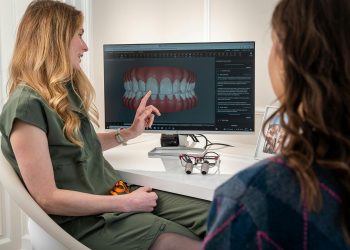Regenerative medicine represents a groundbreaking approach in the realm of pain management. It offers new hope for those struggling with chronic pain by harnessing the body’s own healing processes to repair and rejuvenate damaged tissues. As an alternative to traditional pain management techniques, regenerative medicine promises not just relief, but also the potential for long-term recovery. This approach focuses on using advanced techniques to regenerate damaged tissues and restore functionality, providing a fresh perspective on managing pain.
Mechanisms of Tissue Repair and Regeneration
Regenerative medicine works by stimulating the body’s natural ability to heal itself. This involves several key mechanisms, including the use of stem cells, growth factors, and tissue engineering. Stem cells, for instance, have the unique ability to transform into various types of cells needed for tissue repair. When injected into damaged areas, they can help regenerate tissues that have been compromised due to injury or illness.
Growth factors also play a crucial role in this process by promoting cell growth and healing. By applying these factors to the affected area, regenerative medicine can accelerate the repair process, reduce inflammation, and enhance overall tissue regeneration. This biological approach is designed to address the root causes of pain and damage, offering a more holistic solution compared to traditional methods.
Benefits of Regenerative Medicine Compared to Traditional Methods
Regenerative medicine offers several advantages over traditional pain management techniques. One of the most significant benefits is the potential for long-term relief rather than temporary fixes. Traditional methods, such as pain medication or physical therapy, often provide short-term alleviation of symptoms without addressing the underlying cause. In contrast, regenerative medicine focuses on repairing and rejuvenating damaged tissues, which can lead to more sustainable outcomes.
Additionally, regenerative medicine often involves fewer side effects compared to conventional treatments. While pain medications and invasive surgeries can come with various risks and complications, regenerative techniques aim to harness the body’s natural healing capabilities, reducing the need for pharmaceutical interventions and extensive recovery periods. This approach not only enhances the quality of life but also minimizes the potential for adverse effects associated with traditional pain management.
Common Conditions Treated with Regenerative Medicine
Regenerative medicine is proving to be effective in treating a wide range of conditions that cause chronic pain. Commonly addressed issues include osteoarthritis, tendon injuries, and chronic back pain. For instance, stem cell therapy has shown promise in alleviating pain and improving function in individuals with osteoarthritis by promoting cartilage repair and reducing inflammation.
Similarly, regenerative treatments are used to address tendon injuries, such as those in the shoulder or knee. By encouraging tissue regeneration and reducing pain, these therapies can significantly improve mobility and overall function. In cases of chronic back pain, regenerative medicine aims to repair damaged discs and tissues, providing relief and enhancing the quality of life for those suffering from persistent discomfort.
The Role of Personalized Treatment Plans
Personalized treatment plans are a cornerstone of effective pain management with regenerative medicine. Each patient’s condition is unique, and a one-size-fits-all approach may not be the most effective. By tailoring treatments to the specific needs of the individual, healthcare providers can optimize outcomes and ensure that each patient receives the most appropriate care.
Personalized plans often involve a thorough assessment of the patient’s medical history, lifestyle, and specific pain issues. Based on this information, a customized treatment strategy is developed, which may include a combination of regenerative therapies such as stem cell injections, platelet-rich plasma (PRP) therapy, or tissue engineering techniques. This individualized approach enhances the likelihood of success and ensures that the treatment aligns with the patient’s overall health goals.
Current Research and Advancements in Regenerative Medicine
The field of regenerative medicine is rapidly evolving, with ongoing research and advancements continually improving treatment options. Recent studies have focused on refining techniques, enhancing the efficacy of stem cell therapies, and exploring new applications for regenerative medicine. For example, researchers are investigating the potential of combining regenerative therapies with advanced imaging technologies to better target and treat specific areas of pain.
Additionally, advancements in tissue engineering and biomaterials are contributing to the development of more effective and long-lasting treatments. These innovations aim to improve the integration and functionality of regenerated tissues, leading to better outcomes for patients. As research progresses, regenerative medicine is expected to offer even more refined and effective solutions for managing pain and improving overall quality of life.
Regenerative medicine is revolutionizing pain management by addressing the root causes of pain through tissue repair and rejuvenation. With its potential for long-term relief, fewer side effects, and the ability to treat a variety of conditions, it represents a significant advancement over traditional pain management methods. As research continues to advance, regenerative medicine promises to further enhance its effectiveness, providing hope for those seeking relief from chronic pain.


























